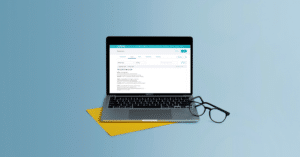One of the questions I get most often is about speech therapy student data collection (and how to keep it all organized)! I polled my speech therapy community to vote for their favorite data collection solutions to understand what works best for each type of SLP. This is a pretty dense blog post, but I hope it’ll be helpful–especially if you’re not sure where to start or if you’re unhappy with how you’re currently taking data.
There are hundreds (maybe even thousands?!) of unique ways to collect data. I’ve struggled to find the “best” data collection system for my caseload. Let me tell you, I have tried a number of different “systems.”
In order to help YOU decide which system you might like to try, I’m doing a round-up of a handful of different data collection tools. First, I’ll have a list of things to consider. Then, I’ll tell you about three broad “categories” of data sheets. I will briefly touch on how you can organize your data and share a handful of tips and tricks. Let’s hop to it!
If you’re a busy SLP and want a quick answer, take this quick quiz!
The Big Questions
Before you pick a system, ask yourself…
Do I want data sheets for individual students? Do I want multiple students on one page?
Do I want my students’ goals on each data sheet? What other information do I need?
What type of data am I tracking (percentages, trials, rating scales, checklists, narrative)?
Do I need graphs?
Do I want a “paper and pencil” system? Or a digital system?
How will I store my data?
Will my students be involved in tracking data?
Tips & Tricks for Speech Therapy Data Collection
1. Don’t be afraid to mix and match.
I use a different system for preschool than I do for my older students. Therapy looks a lot different in both of those settings, so I picked a data collection tool that would help me track progress as effectively as possible.
2. Use keys.
Develop a key for things that you end up writing a lot (e.g., types of cueing, anyone?). It might be helpful to include on your data sheet. This will keep you consistent and allow anyone else looking at your data sheet to decipher it (or at least attempt to)!
If you’re taking data digitally, you can also use a text expander!
3. Think ahead.
When you’re writing the IEP in the first place, think about how you are going to measure progress. Do you want to use percentages, trials, a rating scale, a checklist, or a combination? When you are setting up your data sheets, what information are you always scrambling to find when you’re updating an IEP or writing progress reports? Pick a system that will make it easy to do what you say you’re going to do!
4. Make a system.
Systems are a great way to stay organized. When I used paper data, I spent a lot of time carefully putting together my binders in a way that would make them easy to use. I scheduled formal progress monitoring strategically. We are far too busy to spend time shuffling through papers trying to find what we need, so plan ahead and make a system that works for you!
Traditional Speech Therapy Data Sheets
1. Individual Data Sheets
This seems to be a popular option! There are SO many different data sheets out there. Click here to access free speech therapy data sheets that are fully editable and include options for individual and group data. The “Notes” box is also big enough for 1 x 2.62″ labels (see Amazon link at the bottom of this post).
2. Daily Sheets
Natalie Snyders wrote a blog post about how she uses ONE sheet of paper for a whole day of students.
Tip: I like to create my data sheets in PowerPoint. I copy my students’ goals/information onto the data sheet, and it is super easy to copy and paste slides to make multiple data sheets. Excel would also work. Microsoft Word is a little trickier; I always seem to have a hard time getting the spacing to stay the same when I copy and paste.
Label Speech Therapy Data Sheets
You can use mailing labels for your larger groups and in-class interventions. It makes it possible to take data for multiple students without having to flip to each student’s individual data sheet. At the end of the session, you just stick the label on their individual data sheet. It can be difficult to maintain, but it does make group data a little easier!
I wasn’t the only one with this idea! Rachel from Queen’s Speech wrote a fabulous blog post on how she uses labels for data tracking. Nicole from Speech Peeps also talks about how she uses labels to track RTI data in this blog post. Both posts include free templates!
You could also use labels to log parent communication.
Electronic Speech Therapy Data Sheets
1. Google Drive
I just wrote a detailed post about this (including a video tutorial). Check it out here.
2. Excel Spreadsheet
This could look really similar to what I showed you in Google Drive. With this option, it might be harder to collaborate with other SLPs/educators, and you wouldn’t be able to take data on-the-go (e.g., using a Google Form or a QR code). However, it is more secure, and you don’t have to rely on Internet connectivity.
3. Word Document
I know some of my friends type in their data on the computer. You could use my Data Sheets on TPT to do this. I haven’t tried it, but they say the ability to copy and paste for billing purposes is a time saver. Word might also be more user-friendly if you’re not a huge fan of tech.
4. SLP Now
SLP Now also has a set of tools to manage your data digitally. You can import your caseload, set up your therapy schedule, enter student data, and automatically generate graphs/Medicaid notes in one streamlined system! We also have built-in tools to help you keep track of parent communication.
Want to start taking Digital Data? Join our free Digital Data Bootcamp today and get started!
Speech Therapy Data Storage
1. Binder
Data binders are very popular! You can use dividers to separate students by day. You can also use the binder to store attendance logs, data sheets, progress monitoring sheets, and other useful caseload data.
2. File Folders
I started the year using file folders (one for each student). It was nice because I could grab all the folders for one day and put them by my therapy table. It was rewarding to see the pile shrink as the day went on. I also used the folders to store activities and progress monitoring sheets.
Personally, I found that it was easier to keep my data sheets in one place (a binder). It wasn’t streamlined enough for me.
3. Electronic
Yay! We touched on this already!
Want to start taking Digital Data? Join our free Digital Data Bootcamp today and get started!




Thank you for including a few of my tips, Marisha!! Love this post!
You are very welcome! You have such great, helpful ideas. I just had to share!
Thank you for including so many option for data tracking! I completed my CF in a school, but I am now in a private practice. I’m hoping to get back into a school soon, so I’ve been really digging into your posts to find some inspiration!
Thank you, Linsday! You’re too sweet!
My son receives speech and language services at school. I have asked attendance logs, data sheets, progress monitor sheets. Which they have not been able to give to me. Firsts they said they will gets it me. Now they are saying that they don’t have such thing. What can I do? This is very unprofessional of them.
Hi Natalie! Sorry to hear that’s happening! Have you contacted the principal of the school? And/or the head of the special education department? If you’ve already reached out to those people, you might reach out to a special education advocate in your area. They can help you communicate with the school/district to figure out the best way to make sure your child has everything he/she needs to be successful!
Do you turn in these data sheets for Medicaid billing purposes or do you have a separate form for that? Or do you even have to bill?? I like having the continuous information because I find when I turn in my billing sheet, I feel like I am starting all over the next month. I lose my continuity between months and end up missing a couple of goals.
Hi Nicole! I don’t have to bill this year. However, in my state, we don’t have to turn in any paperwork. It’s all electronic for us! If I were billing, I would just enter the data electronically and mark off on the data sheet (so I know where to pick up the next time I bill).
Wow!!! Love this post!!!
I’ve been using a similar data sheet (that I created on my own) but you’re taking me to the next level…
Giving me a better handle on my kiddos goals and progress!!!
Really appreciate you sharing!!! You’re AMAZING!!!
Thank you so much, Susan! You made my day! 😀
Thanks for all the great info!! Hoping to become more organized with the new year!
As a brand new SLP in my CFY, this post is an AWESOME resource! As a school SLP with about 65 kids on my caseload, data tracking often feels so overwhelming and cumbersome. I look forward to trying some new ideas from this post!
I still like using paper and pencil but my district seems to prefer to see us using graphs or electronic based versions. Thanks for the ideas…we will see if I venture out to try a new way or stay with my tried and true.
Great info! I have tried just about all ways of keeping data on paper….am always trying to find an electronic system to keep student data, will have to check some of these ideas out! Thanks!
Do you how long therapy logs need to be kept in the schools on students SLP’s see?
That’d be a great question for your special education department. The requirements vary across states/districts!
Just joined and loving it so far!! Do you store your student data in your organizer tote? I’m in several schools so it will have to be mobile. I’m thinking I can keep all data logs in a binder and put in the tote you recommended on your website.
You could definitely do that! You could also take data digitally. 😀
Thanks Marisha. I do have a question. One key problem for me personally is needing to see the day’s plan on paper in front of me. I just have no time between groups to bring up the next session on the computer to look and see what the goals are and what the activity will be. That part needs to be done before I start. I ended up typing all of my schedule with names and times and goals listed under each name so I could just circle the target and tally the data on these sheets and then transfer the percentages to the SLP Now program. How do you handle this part? Thank you so much for all of the personal service you constantly provide. I appreciate that!
Ah that totally makes sense! It really depends on what works best for you!
I like pulling up the list view on my iPad. 🙂 I just enter everything right there, and I’m good to go!
I’d be more than happy to brainstorm with you too. Just send me a message!